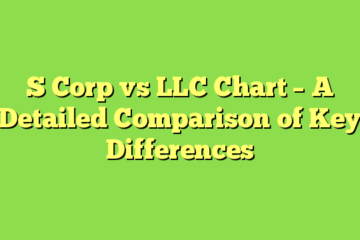In an age where online shopping and digital payments are ubiquitous, credit card security has become a major concern for consumers. A key protective measure offered by credit card companies, including Limited Liability Companies (LLC), is $0 Liability, a policy shielding cardholders from financial liability for unauthorized charges.
This guide provides a comprehensive look at zero Liability, explaining how it works, its legal backing, and tips on leveraging its protection against fraud.
$0 Liability policies state that consumers are not responsible for charges made without their permission. This provides peace of mind against the repercussions of identity theft and credit card fraud. While this policy offers substantial security, cardholders must remain vigilant by monitoring statements, reporting suspicious activities promptly, and adopting best practices.
What Exactly is $0 Liability for Credit Cards?
Simply put, $0 Liability means that consumers are legally protected from the financial damages of credit card fraud. If an unauthorized third-party gets access to your card or card number and makes purchases without your permission, your card issuer cannot hold you financially responsible. Instead, they bear the costs in most cases.
This policy is adopted by major companies like Visa, Mastercard, American Express, and Discover. It aims to promote confidence in credit card usage despite growing data security concerns. When consumers know their financial interests are safeguarded, they can confidently utilize digital payment methods.
The Workings of Zero Liability: How Does it Protect You?
When an unauthorized credit card charge occurs, $0 Liability kicks in automatically without requiring additional registration for products like credit cards and Auto Loans. You simply need to report the fraudulent transaction to your card issuer. They will conduct an investigation, during which you will receive “provisional credit” for the disputed amount, usually within 5 business days.
Following review, if found that you did not authorize the charge, the credit becomes permanent and you face no financial liability under $0 Liability. The costs are borne by the parties involved, including merchants and the credit card network. Your card issuer may issue a replacement card as well.
This protects consumers from the major damages of credit card fraud, including direct financial losses and stress from addressing identity theft.
The Legal Backdrop That Shapes 0 Liability Policies
$0 Liability has its roots in consumer protection laws at both federal and state levels. This includes the Fair Credit Billing Act (FCBA), which caps consumer liability for unauthorized credit card charges at $50. It also sets requirements for swiftly resolving fraud disputes.
Many major card issuers now go beyond the FCBA limit by voluntarily providing $0 liability. They are aided by networks like Visa and MasterCard, which operate robust multifactor authentication and fraud monitoring programs.
Understanding the legal backdrop and protections that enable $0 Liability is key to effectively leveraging it.
$0 Liability in Action: What to Do When You Suspect Fraud
Despite your best efforts at caution, credit card fraud can still occur. When unauthorized charges show up on your statement, prompt action is vital to leverage $0 Liability protection.
Here are the key steps to take:
- First, immediately contact your card issuer through phone or their official website. Provide relevant details on the fraudulent transactions, including dates, merchants, and charges amounts. This quick notification sets dispute resolution in motion.
- Follow up your initial contact with a written account statement within 60 days. Describe the disputed charges and why you believe they are fraudulent. Include supporting documents like police reports to back your claims of unauthorized activity. This builds your case under $0 Liability.
- Going forward, actively monitor the investigation process and account for any provisional credits. Federal law requires temporary return of disputed funds until fraud claims are validated. This usually occurs within 5 business days.
- Finally, if it is determined that the charges were indeed unauthorized, they are permanently removed from your account with $0 liability due to you. On the other hand, if validated as legitimate activity, the provisional credits may be reversed.
Acting quickly and efficiently if fraud occurs limits damages. Verify the exact dispute resolution procedures with your card issuer to fully leverage $0 Liability protections.
Despite proactive measures, fraud can still occur. Here are the key steps if you spot unauthorized charges:
- Immediately notify your card issuer through their official channels. Provide relevant transaction details.
- Follow up with a written statement within 60 days describing the disputed charges. Include supporting documents where applicable.
- Monitor the post-reporting process. Account for any provisional credits during fraud investigations.
- If determined unauthorized, the charges are permanently removed under $0 Liability, protecting your financial interests.
Acting quickly and following official dispute resolution procedures is vital, ensuring you fully benefit from $0 Liability.
Preventive Measures: How to Avoid Becoming a Victim
An ounce of prevention still outweighs the cure when it comes to credit card fraud. Regularly review statements and credit reports to catch irregular activity early. Set up transaction alerts via email or SMS to stay updated. Only make online purchases through secure websites using SSL encryption. Check that URLs begin with “https.”
Be wary of unsolicited emails and phone calls asking for personal information. These are often phishing scams seeking data for fraud. Use strong unique passwords for all accounts, especially financial ones.
Avoid easy-to-crack options like “Password123”. Only connect to trustworthy Wi-Fi networks when accessing financial apps or making online purchases. Public hotspots carry security risks.
Carefulness, vigilance, and adoption of best practices remain your first line of defense against credit card fraud. $0 Liability provides backup protection, but precaution is still better than cure.
Conclusion
In closing, $0 Liability represents a major milestone in consumer rights, providing financial security against credit card crime. Backed by legal protections and adopted by leading financial networks, it allows cardholders to reap the efficiencies of digital transactions without undue anxiety.
However, benefiting fully from $0 Liability depends on awareness and responsible usage habits. Be sure to understand its intricacies, including liability thresholds, coverage exclusions, and post-fraud protocols.
Combining this knowledge with proactive precautions offers comprehensive protection allowing you to shop online and utilize digital wallets with greater confidence and peace of mind.
Frequently Asked Questions
Does $0 Liability completely eliminate all financial liability if my card gets stolen?
In most cases, yes – $0 Liability removes consumer responsibility for unauthorized charges. But exceptions exist, like for gross negligence in protecting card data. Always check your issuer’s exact policy details.
How quickly will fraudulent charges be reversed under $0 Liability if I report them promptly?
Federal law requires provisional credit within 5 business days. After fraud investigation concludes, the charges must be permanently removed. Timeframes can vary, so verify with your provider.
Does $0 Liability apply for debit/ATM cards?
Protections can differ – while major companies like Visa provide $0 Liability for debit cards, policies vary. Carefully review regulations and your bank’s terminology.
What should I do if my card issuer disputes that transactions were truly unauthorized?
Present clarifying evidence like police reports proving your lack of authorization. If disputes continue, approach government consumer financial protection agencies.
Where can I learn more about laws and rights related to credit card fraud protections?
Excellent resources are Federal Trade Commission consumer information on credit card fraud and identity theft protections, as well as official state government consumer affairs websites.

Aisha Noreen is an owner of a small business with more than 9 years of experience in the marketing industry. With the wisdom of an old soul, she always seeks innovation and mind-blowing ROI techniques. Her unique approach helped many small businesses thrive and she can surprise you in many ways as well. Believe it or not, her energy, passion, and creativity are contagious enough to transform your business and take it to another level.





